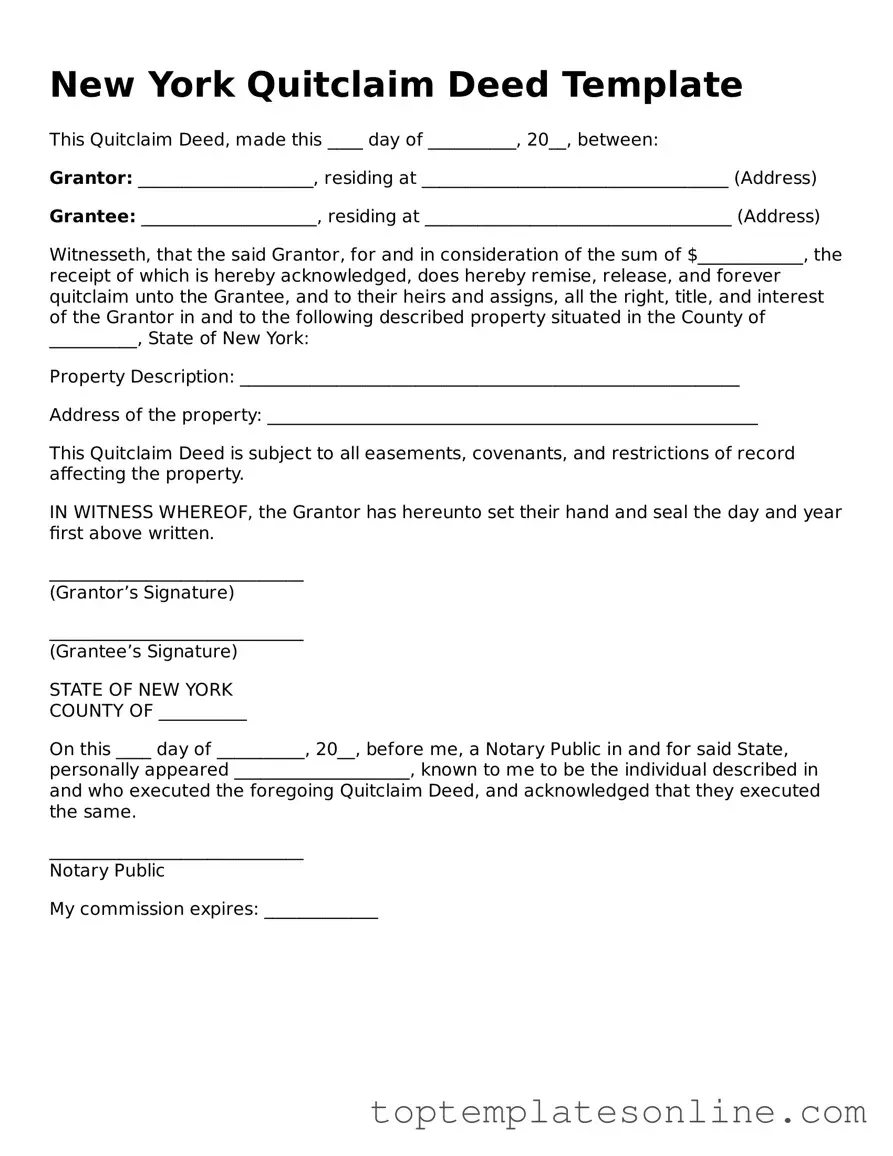Blank Quitclaim Deed Template for New York State
A Quitclaim Deed is a legal document used to transfer ownership of real estate from one party to another without making any guarantees about the title's validity. This form is particularly useful in situations where the parties know each other well, such as family transfers or divorces. Understanding how to properly utilize a Quitclaim Deed in New York can help ensure a smooth property transfer process.
Customize Quitclaim Deed Here
